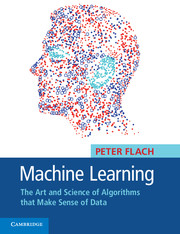Book contents
- Frontmatter
- Contents
- Preface
- Prologue: A machine learning sampler
- 1 The ingredients of machine learning
- 2 Binary classification and related tasks
- 3 Beyond binary classification
- 4 Concept learning
- 5 Tree models
- 6 Rule models
- 7 Linear models
- 8 Distance-based models
- 9 Probabilistic models
- 10 Features
- 11 Model ensembles
- 12 Machine learning experiments
- Epilogue: Where to go from here
- Important points to remember
- References
- Index
5 - Tree models
Published online by Cambridge University Press: 05 November 2012
- Frontmatter
- Contents
- Preface
- Prologue: A machine learning sampler
- 1 The ingredients of machine learning
- 2 Binary classification and related tasks
- 3 Beyond binary classification
- 4 Concept learning
- 5 Tree models
- 6 Rule models
- 7 Linear models
- 8 Distance-based models
- 9 Probabilistic models
- 10 Features
- 11 Model ensembles
- 12 Machine learning experiments
- Epilogue: Where to go from here
- Important points to remember
- References
- Index
Summary
TREE MODELS ARE among the most popular models in machine learning. For example, the pose recognition algorithm in the Kinect motion sensing device for the Xbox game console has decision tree classifiers at its heart (in fact, an ensemble of decision trees called a random forest about which you will learn more in Chapter 11). Trees are expressive and easy to understand, and of particular appeal to computer scientists due to their recursive ‘divide-and-conquer’ nature.
In fact, the paths through the logical hypothesis space discussed in the previous chapter already constitute a very simple kind of tree. For instance, the feature tree in Figure 5.1 (left) is equivalent to the path in Figure 4.6 (left) on p.117. This equivalence is best seen by tracing the path and the tree from the bottom upward.
The left-most leaf of the feature tree represents the concept at the bottom of the path, covering a single positive example.
The next concept up in the path generalises the literal Length = 3 into Length = [3,5] by means of internal disjunction; the added coverage (one positive example) is represented by the second leaf from the left in the feature tree.
By dropping the condition Teeth = few we add another two covered positives.
Dropping the ‘Length’ condition altogether (or extending the internal disjunction with the one remaining value ‘4’) adds the last positive, and also a negative.
[…]
- Type
- Chapter
- Information
- Machine LearningThe Art and Science of Algorithms that Make Sense of Data, pp. 129 - 156Publisher: Cambridge University PressPrint publication year: 2012

